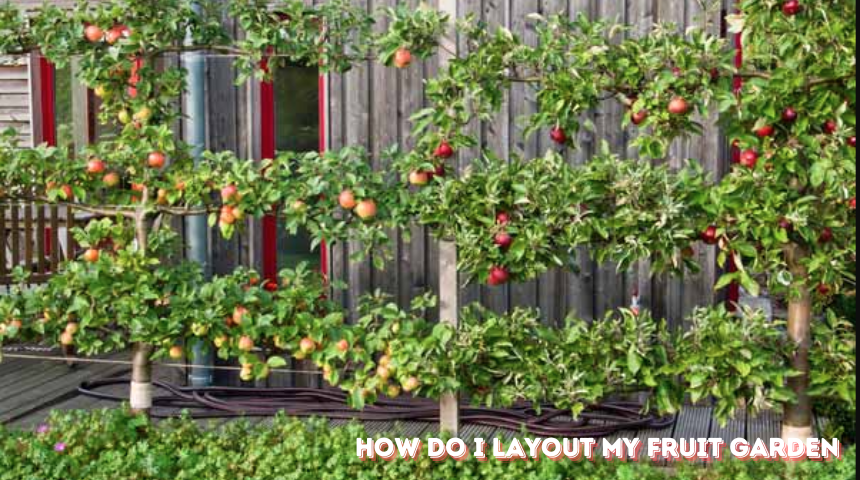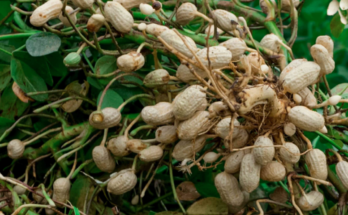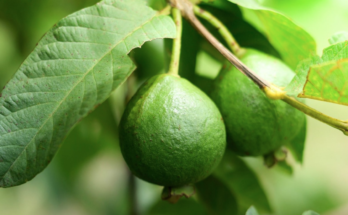Designing a fruit garden can seem like a daunting task, but with a bit of planning, it becomes enjoyable and rewarding. I often find myself thrilled by the possibilities of arranging a fruit garden.
Choosing the right layout maximizes space and ensures that each plant gets the sunlight and nutrients it needs.
In this guide, I’ll share some simple tips and tricks that I use to create a thriving fruit garden. Whether you’re working with a small backyard or a larger space, a well-thought-out design will make a huge difference.
From selecting the right location to understanding plant spacing, every detail counts. I’ll walk you through the process, showing you how to create a garden that’s not only productive but also visually pleasing.
So grab your gardening gloves, and let’s get started on making your fruit garden flourish!
How do I layout my Fruit Garden?
To layout your fruit garden, start by choosing the right location. Pick a spot with plenty of sunlight and good drainage. Next, plan the spacing between plants to ensure they have room to grow.
Arrange taller trees on the north side and shorter plants on the south to avoid shading. Group plants with similar water and soil needs together. Use raised beds or containers if space is limited.
Finally, consider the growth habits of each fruit type. I recommend drawing a simple sketch of your garden plan before planting. This approach will help you create a healthy and productive garden.
Locating Your Veg Garden: Choosing the right location is crucial for a successful vegetable garden. Look for a spot that gets full sun for at least 6-8 hours a day, as most vegetables need plenty of sunlight to grow well.

Avoid areas with heavy shade from trees or buildings. Check the drainage of the area; vegetables don’t like sitting in waterlogged soil.
If you have clayey soil, consider adding organic matter to improve drainage. Also, ensure the spot is easily accessible for regular care and harvesting.
Type of Beds – Raised or Flat: Raised beds and flatbeds each have their own benefits. Raised beds are elevated and often enclosed with materials like wood, stone, or metal. They offer superior drainage and allow you to control the soil quality more easily.
Raised beds can also reduce the need for bending over, making gardening more comfortable. Flatbeds are planted directly in the ground. They’re easier to set up and can be a good option if your soil is already in good condition.
However, they might require more work to ensure proper drainage and may be less comfortable to work with.
Size of Your Fruit and Veg Beds: The size of your garden beds will impact how easily you can manage them. A width of about 4 feet is ideal, as it allows you to reach across the bed without stepping on the soil and compacting it.
Length can vary based on your available space but generally falls between 6 to 8 feet. For larger gardens, you might create multiple beds of varying sizes. If you’re limited in space, consider narrow beds or containers to maximize your growing area.
Number of Fruit and Veg Beds: Starting with a manageable number of beds helps keep the garden manageable. For beginners, 2-3 beds for vegetables are a good starting point.
This setup allows you to grow a variety of vegetables without feeling overwhelmed. If you want to include fruits, start with 1-2 beds dedicated to fruit plants. You can gradually expand the number of beds as you gain experience and confidence.
Making Your Beds: Constructing your beds involves a few key steps. For raised beds, use materials such as untreated wood, bricks, or cinder blocks.

Ensure the bed is at least 12 inches deep to accommodate plant roots. Fill the bed with a rich mixture of compost, topsoil, and other organic materials.
This ensures good drainage and fertility. For flatbeds, loosen the soil with a fork or tiller, incorporate compost, and level the bed. Adding a layer of mulch can help retain moisture and suppress weeds.
Maintaining Your Fruit and Veg Beds: Regular maintenance is essential for a thriving garden. Water your beds consistently, aiming for about 1 inch of water per week, either from rainfall or irrigation.
Keep the beds free from weeds, which can compete with your plants for nutrients and water. Apply mulch to conserve moisture and reduce weeds. Monitor for pests and diseases, addressing any issues promptly to prevent them from spreading.
Rotate your crops each year to maintain soil health and prevent the buildup of pests and diseases. Regularly adding compost or organic fertilizers will replenish soil nutrients and support healthy plant growth.
What type of areas do you have to work with?
When planning a garden, it’s important to assess the different types of areas you have to work with. Whether you’re dealing with narrow strips, small beds, tiny spots, or larger beds, each space offers unique opportunities and challenges.
By understanding the specific characteristics of your garden areas, you can choose the best plants and gardening techniques to make the most of your space.

Tailoring your approach to each type of area ensures that every corner of your garden can be productive and visually appealing.
Narrow Strips: Narrow strips are often found along fences, walkways, or between larger garden beds. They can be challenging but offer unique opportunities for efficient planting. For these areas, consider using container gardening or vertical planting methods.
Trellises and hanging planters are excellent for utilizing vertical space, allowing you to grow vining plants like cucumbers, beans, or tomatoes.
Herbs such as basil, thyme, and parsley, or leafy greens like lettuce and spinach, work well in narrow strips due to their shallow root systems. Regular watering and fertilizing are crucial in these confined spaces to ensure healthy plant growth.
Small Beds: Small garden beds, often seen in urban or suburban settings, can be incredibly productive if planned well. They are perfect for intensive planting, where you grow crops close together to maximize space.
Use square-foot gardening techniques to organize your plants into a grid, allowing for efficient use of space and easy access. Root vegetables like radishes and carrots, along with leafy greens such as kale and spinach, thrive in small beds.

Ensure good soil preparation with rich compost to support multiple plants in a limited area. Regular weeding and mulching help keep the beds productive and manageable.
Tiny Spots: Tiny spots, like small corners or narrow spaces, can still be productive with creative solutions. Container gardening is ideal for these areas, allowing you to grow a variety of plants in pots or hanging baskets.
Choose compact varieties of plants, such as dwarf tomatoes, small peppers, or herbs like mint and chives. Microgreens are perfect for tiny spots as they grow quickly and require minimal space.
Vertical planters or stacked containers can also help make the most of these small areas. Ensure that containers have proper drainage and receive adequate sunlight to keep plants healthy.
Larger Beds: Larger garden beds provide ample space and flexibility for a diverse range of plants. They are ideal for implementing crop rotation, which helps maintain soil fertility and reduce the risk of pests and diseases.
Consider dividing the bed into sections for different types of plants, such as a section for root vegetables, leafy greens, and fruiting plants. This allows you to manage the growing conditions for each type of plant more effectively.
Companion planting can be used to improve plant health and yield by pairing plants that benefit each other. For larger beds, incorporate organic matter and fertilizers to keep the soil rich and productive.

Regular maintenance like watering, weeding, and monitoring for pests will ensure your larger beds remain thriving and fruitful.
Odds and Ends, Containers, and Patios: Even small or unconventional spaces can be transformed into productive garden areas.
Containers offer flexibility, allowing you to grow a wide range of plants, from herbs and vegetables to flowers, on patios, balconies, or even small outdoor areas.
Utilize patios by incorporating container gardens or raised beds to add greenery without needing extensive space. For odds and ends of your garden space, such as narrow corners or unused areas, consider vertical gardening or hanging planters.
These solutions help you maximize every bit of available space, making your garden both functional and attractive.
Sheltered Spots: Sheltered spots in your garden, like areas near walls, fences, or under tree canopies, can offer unique microclimates. These areas often protect from harsh weather conditions and can be ideal for shade-loving plants or those that need some extra warmth.
Use these sheltered spots to grow herbs, lettuce, or shade-tolerant vegetables. Ensure that the area still receives adequate light and ventilation. Adding mulch or compost can help improve soil conditions and support plant growth in these more protected areas.
Edible Landscaping: Edible landscaping combines beauty with practicality by integrating fruit-bearing plants, herbs, and vegetables into your garden design.
Instead of traditional ornamental plants, use edible varieties like berry bushes, fruit trees, and culinary herbs to create a garden that is both functional and visually appealing.
Incorporate these edible plants into flower beds, borders, or even as ground cover. This approach not only adds a productive element to your garden but also enhances its aesthetic appeal, making your outdoor space more enjoyable and useful.
What Does Your Fruit Garden Need?
To ensure a thriving fruit garden, it’s important to address several essential needs. Your garden will require ample sunlight, high-quality soil, and consistent watering to support healthy growth.
Adequate space for each plant, along with proper support structures, will help your fruit trees and bushes flourish.
Additionally, effective pest control and disease management are crucial for maintaining plant health. By meeting these requirements, you set the foundation for a productive and bountiful fruit garden.
Provide It With Plenty Of Sunshine: Fruit plants need ample sunlight to thrive and produce a good harvest. Aim for at least 6-8 hours of direct sunlight each day.

Choose a location that’s free from shade cast by buildings or trees. Good sunlight exposure promotes healthy growth and maximizes fruit production.
Supply It With Adequate Water: Consistent watering is essential for fruit plants. Keep the soil moist but not waterlogged. Drip irrigation or soaker hoses can help deliver water directly to the roots and reduce evaporation. Monitor your plants regularly and adjust watering based on weather conditions and soil moisture.
Give It Regular Attention: Regular care is key to a successful fruit garden. Check your plants frequently for signs of pests, diseases, or nutrient deficiencies.
Prune as needed to promote healthy growth and improve air circulation. Weeding and mulching help reduce competition for nutrients and moisture.
Protect It From Animal Pests: Animals like deer, rabbits, and birds can damage fruit plants. Use protective measures such as fencing, netting, or repellents to keep these pests at bay. Regularly inspect for signs of animal activity and take action promptly to prevent damage.
Avoid Frost Pockets: Frost pockets are areas where cold air tends to settle, potentially damaging your plants. Plant your fruit garden in locations that are less prone to frost, or use frost blankets and row covers to protect sensitive plants during cold snaps.
Ensuring proper site selection and protection can help prevent frost-related damage.
Relax!
Sure thing! Just take a deep breath and relax. Gardening should be enjoyable and fulfilling, not stressful. Whether you’re tending to your fruit garden or planning your next planting, remember that a little patience and care go a long way.
Enjoy the process and take pride in your efforts. If you ever feel overwhelmed, just step back, take a break, and come back with a fresh perspective.
Sources for More Ideas: To get inspired and find more ideas for your garden, explore a variety of resources. Gardening books and magazines offer in-depth advice and creative solutions. Online forums and blogs provide tips from experienced gardeners and real-life examples.
Additionally, gardening shows and YouTube channels can offer visual demonstrations and new techniques. Visiting local garden centers and talking to experts can also provide tailored advice based on your region.

Pruning and Training: Pruning and training are essential techniques for maintaining healthy, productive plants. Pruning involves removing dead or unwanted branches to improve airflow and encourage better fruit production.
Training refers to guiding plants to grow in a particular direction or shape, which can help optimize space and light exposure.
Techniques such as pinching, staking, and trellising are commonly used to support and direct plant growth. Proper pruning and training can enhance plant health and lead to a more abundant harvest.
Are You Afraid to Prune Your Plants?
Many gardeners feel apprehensive about pruning their plants, fearing they might damage them. However, pruning is a crucial practice for maintaining plant health and encouraging growth. Start with small, simple cuts and gradually build your confidence.
Focus on removing dead, diseased, or crossing branches to improve the plant’s overall structure. Remember, pruning can often be adjusted as you go, so don’t worry about making mistakes. With practice, you’ll become more comfortable and skilled at this essential gardening task.
Edible Landscaping: Edible landscaping combines the beauty of traditional garden design with the practicality of growing your food. Incorporate fruit trees, berry bushes, and herbs into your garden beds and landscape features.
Choose plants that offer both aesthetic appeal and culinary benefits, such as flowering herbs or fruiting vines. This approach not only enhances your garden’s visual interest but also provides fresh, homegrown produce.
By integrating edibles into your landscape, you create a functional and attractive outdoor space that offers both beauty and bounty.
FAQ
What is the best location for my fruit garden?
Choose a spot with full sun for at least 6-8 hours a day. Ensure it has good drainage and is protected from strong winds.
How much space should I leave between fruit plants?
Leave adequate space between plants to allow for their mature size. Generally, 3-6 feet apart is ideal, depending on the type of fruit.
Can I plant fruit trees and vegetables together?
Yes, you can. Just make sure fruit trees have enough space and sunlight. Group plants with similar water and soil needs.
What type of soil is best for a fruit garden?
Use well-drained soil rich in organic matter. Adding compost can improve soil fertility and structure.
How often should I water my fruit garden?
Water regularly to keep the soil consistently moist but not waterlogged. Adjust based on weather conditions and the needs of your plants.
Conclusion
In conclusion, laying out your fruit garden can be a fun and rewarding project. Start by choosing a sunny spot and ensuring your soil is rich and well-drained. Plan your garden with proper spacing to give each plant room to grow and flourish.
Incorporate support structures for vining plants and group plants with similar needs together. Don’t forget to regularly monitor and maintain your garden to keep it healthy and productive.
With these tips, you’ll create a vibrant and fruitful garden that brings you joy and plenty of delicious harvests. Enjoy the process and happy gardening



